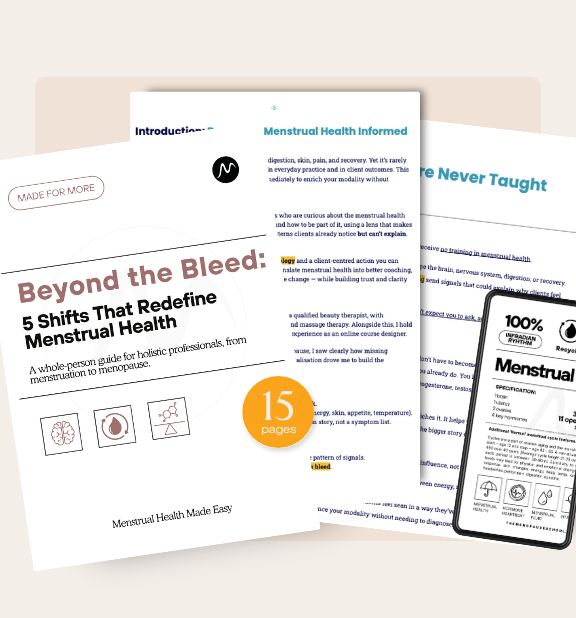The Four Swans: Busting the Myth of Estradiol Decline
The vibrant menopause narrative has centred on a single story of “low oestrogen.” The evidence published in 2012, from The Study of Women Across Nations (SWAN) shows something very different.

A Misleading Portrayal of Perimenopause
In recent years, the menopause conversation has been built around a striking visual: oestrogen sketched as a jagged line sliding downward into silence. It appears in talks, articles, and books. It’s dramatic. It’s simple. And it sticks.
But it isn’t supported by research.
Firstly, it should be named clearly: estradiol — the powerful ovarian oestrogen that shifts most during the transition. And secondly, no published evidence matches those illustrations or proves that perimenopause equals “low oestrogen.”
For years I searched for the science behind the graphics and the claims. I found nothing.
Then I discovered the trajectories published by the Study of Women’s Health Across the Nation (SWAN) in 2012. And there it was: the reality that estradiol does not follow one single path.
The Four Trajectories
SWAN showed that estradiol changes across four possible trajectories:
Rise–Early Decline: Estradiol rises in perimenopause, then falls earlier.
Rise–Late Decline: Estradiol rises and remains higher for longer before falling.
Flat: Levels remain relatively steady, with less variation.
Low–Slow: A gradual, steady fall across the decade.
Each of these is typical. Each reflects different ovarian rhythms.
Why “Low Oestrogen” Is Misleading
In perimenopause, estradiol is not simply low. In fact, it often surges episodically — sometimes higher than before — followed by sharper, short-lived drops. These shifts can be intense, but they last days, not the weeks or months that popular narratives suggest.
That’s the piece missing from the conversation: the transition is about rhythm, not deficiency.
Why the Four Swans Matter
The trajectories explain more clearly why symptom profiles change along the menstrual health timeline. For too long, changes have only ever been explained in terms of “low oestrogen” and inflammation.
This leaves people confused. They build a menstrual health toolkit that seems to work for a while — then suddenly doesn’t. The pattern of ups and downs repeat, leading to frustration and doubt.
When you use the Four Swans as a framework, it makes sense why symptom profiles fluctuate. It shows that what seems inconsistent is actually part of a mapped process.
And that shift transforms understanding. It turns frustration into clarity, and gives people the insight they need to make better-informed decisions about their health.
What the Research Says
The Trajectories of Estradiol and Follicle-Stimulating Hormone During the Menopausal Transition study (SWAN, 2012) shows that about 31.5% of people have estradiol rise-then-early decline, ~13.1% rise-then-late decline, ~26.9% a slow-decline, and ~28.6% a flat / limited decline.

The same SWAN work reports that estradiol levels can surge episodically many years before the final menstrual period, with drops that are sharper but short-lived (days rather than continuous weeks or months).
The American Heart Association substantiated the 4 trajectories model in this review article - https://www.ahajournals.org/doi/full/10.1161/CIR.0000000000000912





